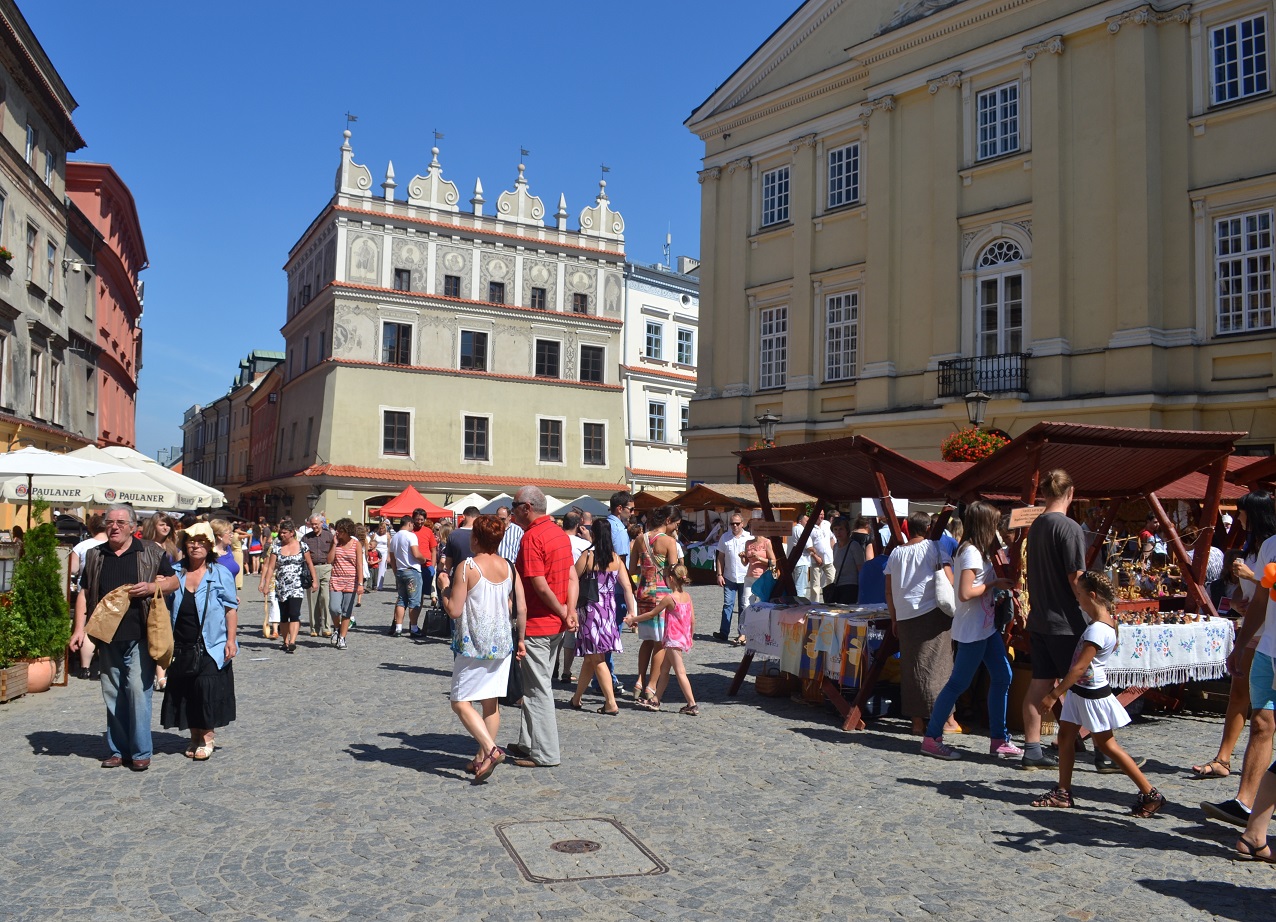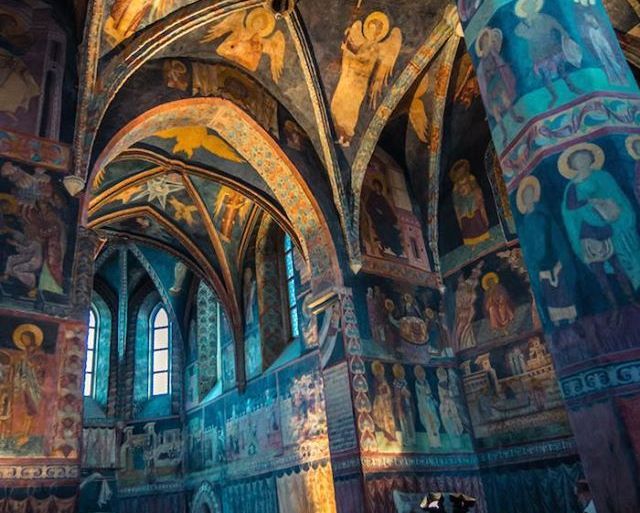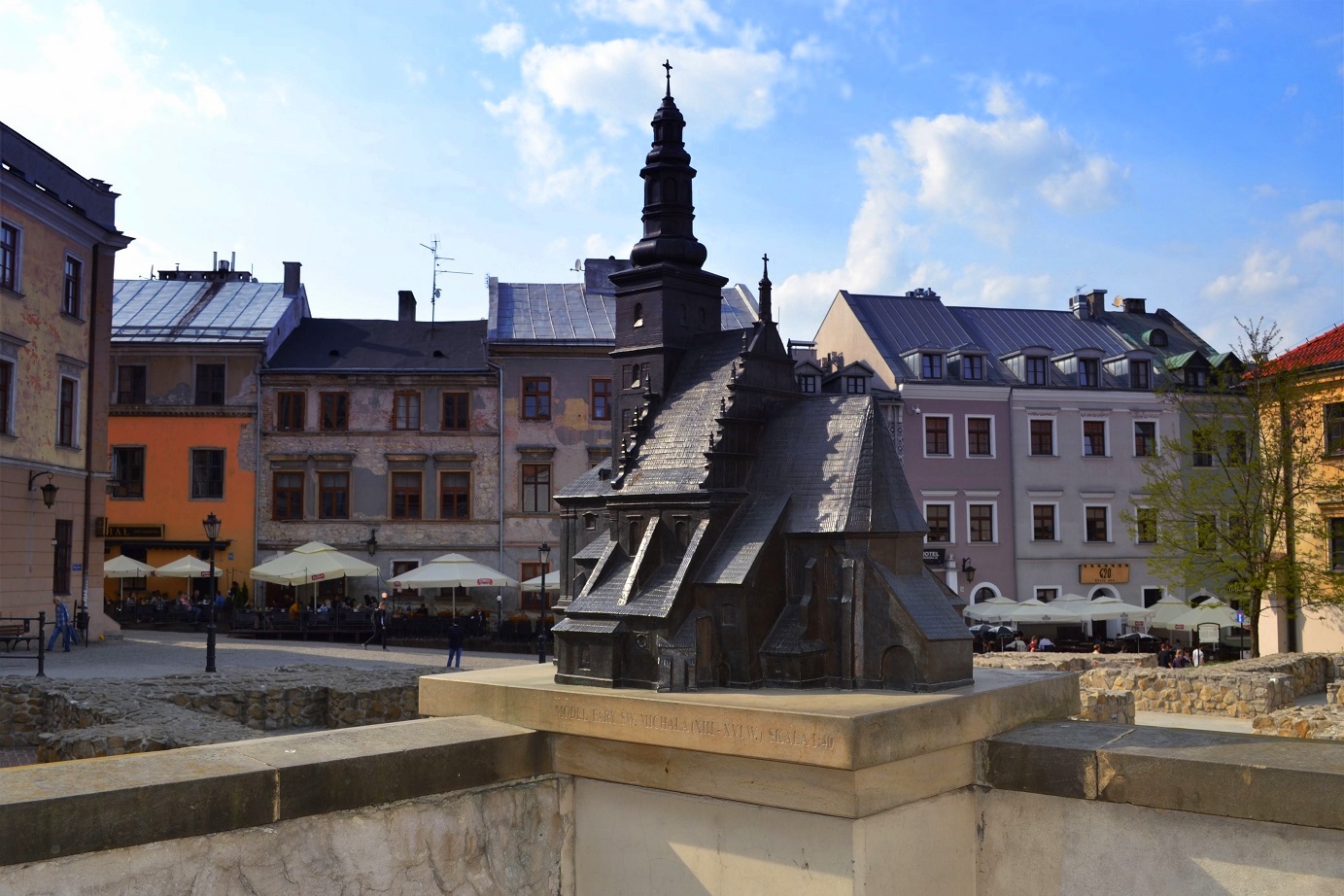The Old Town & The Castle Hill

It has an original Renaissance portal with the Zadora coat of arms, the date 1540 and initial of the name Jan Lubom. The cellar has been turned into a museum - the Fortuna Cellar – where you can see unique historic wall polychromes depicting secular topics. ...

The name of this 16th-century townhouse is connected with the fact that the place held meetings of the City Council during sessions of the court tribunal in Lublin. A sgraffito ornament shaped like the Lublin coat of arms was placed over the main door of the building to commemorate this historic event. ...

Centrally located Old Town Market Square in Lublin has irregular shape. Its location was conditioned by the buildings from before the town's location and the shape of the hill. It was officially outlined over 700 years ago, after Lublin had been granted a city charter (15th of August 1317). ...

The Holy Trinity Chapel, located on the Castle Hill, is a unique example of combining Gothic architecture with Ruthenian-Byzantine frescoes. It is one of the most valuable monuments of medieval art in Poland and Europe. ...

The castle tower, also known as the keep or the donjon, is the oldest building on the castle hill and at the same time in the whole of Lublin. It was probably erected in the second half of the XIII century. The tower is about 30 meters high and its walls on the ground level are up to 4 meters thick. The lower part of the tower is made of limestone and the upper part is made of bricks arranged in the monk bond. ...

Originally it was a fortified tower, a part of the city walls, with a gate leading from the castle to the parish church. In the 16th c. it was converted into a residence for vicars who permanently took care of the parish church. ...

Originally it was a rectory of the Parish Church of St. Michael the Archangel. In the second half of the 19th c. the building was confiscated from the Catholic Church by the Russian authorities. Later it was given to the Jewish Community and served as an orphanage for Jewish children (‘the Shelter’) and a nursing home for elderly and disabled Jews. ...

It has always been regarded as the most beautiful Lublin townhouse owing to rich interior design and outstanding decorative Renaissance façade from 1610. The building is crowned with an impressive attic. The 2004 renovation of the façade restored it to its full glory. ...

The building dates back to the 16th c., as most townhouses located in the Old Town. Till the end of the 19th c. it had been the property of the Riabinin Family. There lived Jan Riabinin, an eminent historian and archivist who researched the history of Lublin. ...

The name of the square is connected with the first church built within the city walls – the Parish Church of St. Michael the Archangel. It was founded in the 13th c. by Leszek the Black as a votive offering for the victory over the Jatvingians. ...
Page 1 of 3













